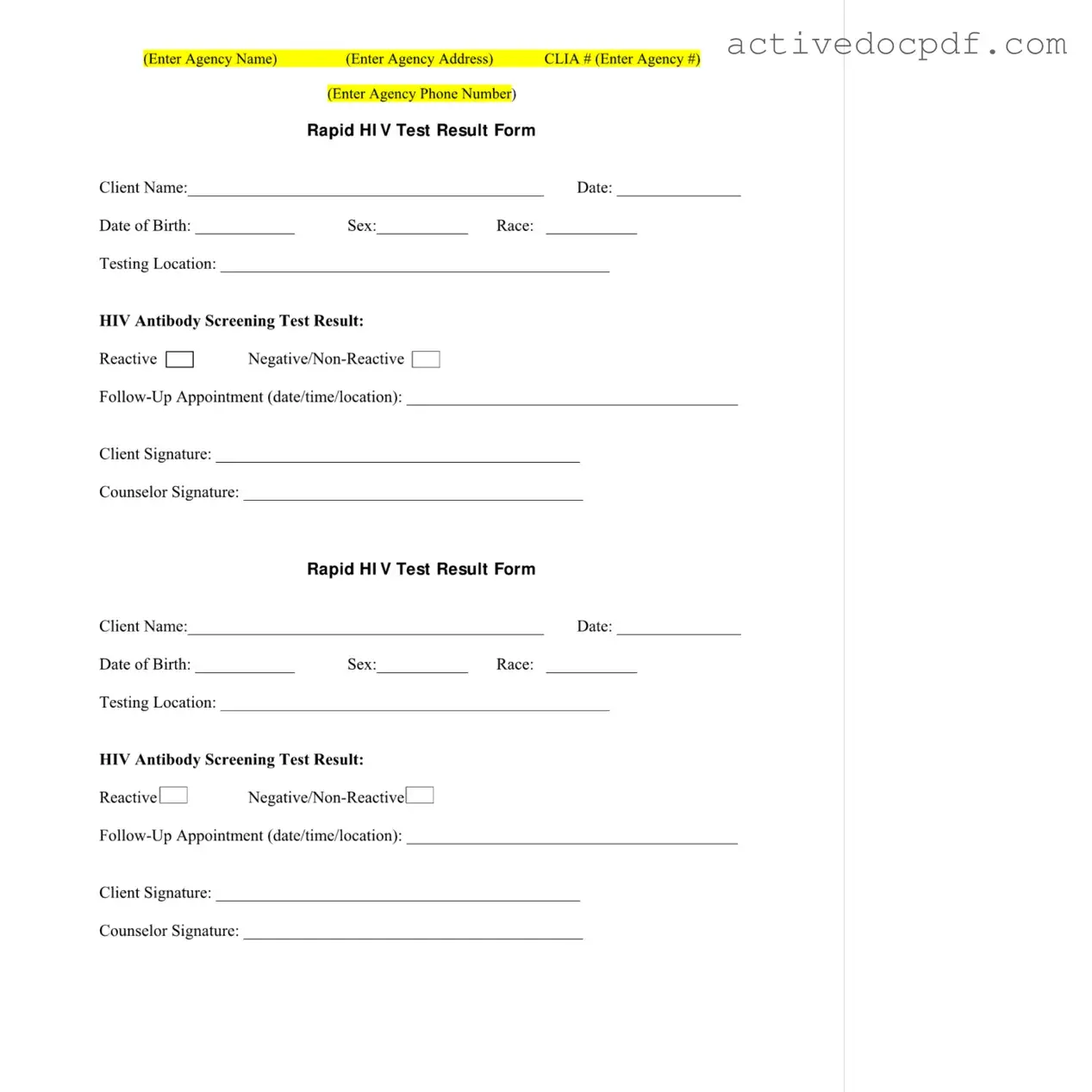A Negative HIV Test Form is a document that provides the results of an HIV antibody screening test. It indicates whether the test result is negative (non-reactive) or positive (reactive). This form is typically used by testing agencies to communicate results to clients.
The form includes several key pieces of information:
-
Client Name
-
Date of Birth
-
Date of the test
-
Race
-
Testing Location
-
HIV Antibody Screening Test Result
-
Follow-Up Appointment details
-
Signatures of the client and counselor
The form will indicate the test result as either "Reactive" or "Negative/Non-Reactive." A "Negative/Non-Reactive" result means that no HIV antibodies were detected in your blood. If the result is "Reactive," it indicates a preliminary positive result, which will require further testing for confirmation.
What should I do if my test result is reactive?
If you receive a reactive result, it is important to follow up with a healthcare provider for additional testing. The reactive result does not confirm HIV infection, but it does mean that further evaluation is necessary.
What is the significance of the follow-up appointment?
The follow-up appointment is crucial for discussing your test results, understanding your health status, and exploring any necessary next steps. This appointment allows you to ask questions and receive support from a healthcare professional.
Yes, the information on the Negative HIV Test Form is confidential. Testing agencies are required to protect your personal health information in accordance with privacy laws.
How often should I get tested for HIV?
The frequency of HIV testing depends on individual risk factors. It is generally recommended to get tested at least once a year if you are at risk. Discuss your specific situation with a healthcare provider for personalized advice.
If you lose your form, contact the testing agency where you received your test. They can provide you with a replacement or a copy of your results, provided you can verify your identity.
Can I request a copy of my test results?
Yes, you have the right to request a copy of your test results. Contact the testing agency to inquire about their process for obtaining copies of your results.
CLIA # refers to the Clinical Laboratory Improvement Amendments number. This number indicates that the testing facility is certified to perform laboratory tests and meet federal quality standards.
